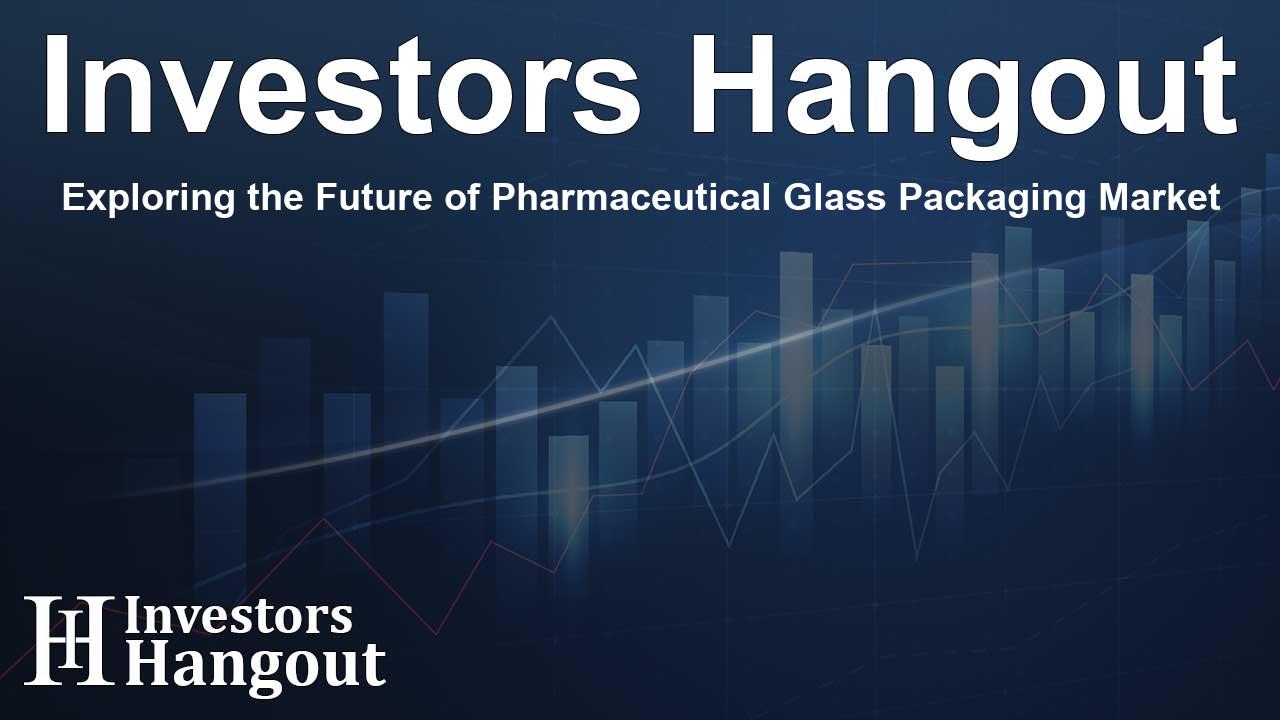Exploring the Future of Pharmaceutical Glass Packaging Market

Overview of the Pharmaceutical Glass Packaging Market
The global pharmaceutical glass packaging market is evolving rapidly, expected to witness remarkable growth in the coming years. Currently valued at approximately USD 23.36 billion in 2024, forecasts indicate that this market could burgeon to around USD 49.20 billion by 2034, reflecting a compound annual growth rate (CAGR) of approximately 7.87% from 2025 to 2034. This growth is largely attributed to the increasing reliance on glass packaging in the pharmaceutical industry due to its inherent properties and the rising demand for safe and sustainable packaging solutions.
Drivers of Market Growth
Rising Demand for Injectable Drugs
There has been a significant surge in the usage of injectable drugs, such as vaccines, insulin, and biologics, driving the demand for pharmaceutical glass packaging. These injectables necessitate containers that are sterilizable and chemically inert, ensuring the stability and safety of the medications. For instance, the distribution of COVID-19 vaccines has created an unprecedented demand for glass vials, with billions of doses needing reliable glass packaging.
Stringent Regulatory Standards
Regulatory agencies, including the FDA and EMA, mandate strict standards for pharmaceutical packaging to ensure safety and effectiveness. Type I borosilicate glass is prominently used due to its superior chemical resistance, which is essential for maintaining the stability of sensitive medications like vaccines. Complying with these regulations boosts the application of glass packaging in the industry, consequently enhancing patient safety.
Market Trends and Innovations
Expansion of Biopharmaceuticals
The affirming growth of biopharmaceuticals, including monoclonal antibodies and vaccines, is profoundly influencing the demand for pharmaceutical glass packaging. These advanced medications necessitate packaging that provides exceptional barrier properties and chemical inertness to preserve their integrity. The ongoing development of biologics indicates a strong need for customized glass packaging solutions to meet the specific requirements of these products.
Sustainability Trends
Environmental sustainability is becoming a pivotal trend influencing the pharmaceutical industry. Many companies are shifting towards glass packaging to align with eco-friendly practices. The recyclable nature of glass positions it favorably in comparison to plastic, catering to the increasing consumer preference for sustainable products.
Geographic Analysis of the Market
North America
North America stands as a key region in the pharmaceutical glass packaging market, thanks to its robust healthcare infrastructure and prominent pharmaceutical companies. The U.S., in particular, leads with significant investments in biologics and vaccines. Coupled with stringent FDA regulations regarding drug safety and the rising prevalence of chronic diseases, the demand for glass packaging is anticipated to escalate in this region.
Europe
Europe presents a mature market characterized by stringent regulations and a strong emphasis on environmentally friendly packaging solutions. The presence of numerous multinational pharmaceutical firms in Germany, France, and the UK fosters consistent demand for high-quality glass packaging. Moreover, the rise in biosimilars and an aging population will further stimulate market growth.
Asia-Pacific
Asia-Pacific is emerging as the fastest-growing region in this market, driven by increasing healthcare expenditures and a burgeoning pharmaceutical manufacturing sector. Countries like China and India are significantly enhancing their production capabilities, thus boosting the demand for cost-efficient glass packaging options, such as Type II and Type III containers.
Competitive Landscape
The pharmaceutical glass packaging market features several key players, including Corning Incorporated, Nipro Corporation, SGD S.A., and Gerresheimer AG. These companies are engaging in various strategies like product innovations and collaborations to enhance their market position. As the demand for biopharmaceuticals and injectable drugs continues to rise, competition among these firms is expected to intensify.
Frequently Asked Questions
What is the projected growth rate of the pharmaceutical glass packaging market?
The pharmaceutical glass packaging market is expected to grow at an approximate CAGR of 7.87% from 2025 to 2034.
Why is glass preferred for pharmaceutical packaging?
Glass is preferred due to its chemical inertness, impermeability, and recyclability, which ensures the safety and effectiveness of sensitive drug formulations.
What are the key drivers for the market's expansion?
Key drivers include the rising demand for injectable drugs, stringent regulatory standards, and the expansion of biopharmaceuticals.
How is the market segmented?
The market is segmented by material types, products, drug types, and regions, providing a comprehensive overview of the sector.
Which region is currently leading in the pharmaceutical glass packaging market?
North America leads the market, driven by significant pharmaceutical investments and a robust healthcare system.
About The Author
Contact Lucas Young privately here. Or send an email with ATTN: Lucas Young as the subject to contact@investorshangout.com.
About Investors Hangout
Investors Hangout is a leading online stock forum for financial discussion and learning, offering a wide range of free tools and resources. It draws in traders of all levels, who exchange market knowledge, investigate trading tactics, and keep an eye on industry developments in real time. Featuring financial articles, stock message boards, quotes, charts, company profiles, and live news updates. Through cooperative learning and a wealth of informational resources, it helps users from novices creating their first portfolios to experts honing their techniques. Join Investors Hangout today: https://investorshangout.com/
The content of this article is based on factual, publicly available information and does not represent legal, financial, or investment advice. Investors Hangout does not offer financial advice, and the author is not a licensed financial advisor. Consult a qualified advisor before making any financial or investment decisions based on this article. This article should not be considered advice to purchase, sell, or hold any securities or other investments. If any of the material provided here is inaccurate, please contact us for corrections.
